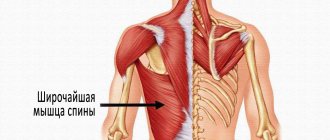Pregnancy is one of the most memorable periods in a woman’s life. In addition to the joy of expecting a new family member, this time is accompanied by a colossal responsibility for the health of the baby and your own. To reduce the load on the body, American obstetrician-gynecologist Arnold Kegel developed a whole set of exercises for pregnant women. Its effectiveness is confirmed by positive reviews from expectant mothers around the world.
Pregnancy, childbirth and pelvic organs
Some pregnant women do not understand which organs are located within the pelvis and what significance they have, as well as why they need a pelvic ultrasound. During pregnancy, the small pelvis is of decisive importance, since it is an important part of the canal during the birth process. This is where the fetus moves, so obstetricians immediately begin to examine its size and whether there are any pathologies in it.
Problems of the small pelvis can complicate the natural course of labor, and sometimes create great obstacles. Knowing the structure and size, the obstetrician can make a prediction about labor and the occurrence of problems during it.
Other pelvic organs are common to men and women - the rectum and bladder. And what is typical only for women are these important organs for the entire reproductive system:
- The vagina is part of the birth canal and the main “person” during sexual intercourse. It is covered with a mucous membrane and can stretch to the required size so that the baby can pass through the birth canal normally.
- The ovaries contain eggs and produce sex hormones; their area of responsibility is the correct menstrual cycle or its delay if the egg is fertilized and then a completely different process begins.
- The fallopian tubes are the most important organ for conceiving a baby. Special villi at the ends of the tubes capture the egg and direct it to the uterus. The uterus is the queen of the pelvic organs, protection and strength for the fetus. It consists of many layers of muscles that stretch during gestation, and during contractions they strongly contract to send the fetus on its way.
- The cervix connects the vagina and uterus.
A woman has contact only with the vagina and can help it develop elasticity and firmness. During pregnancy, doctors recommend doing special exercises for this purpose to train the vaginal muscles. They should become strong for the pregnant woman, and the tissues should be elastic to avoid ruptures during childbirth.
After childbirth, the intimate muscles do not find use for themselves and, as unnecessary, become greatly weakened over time, lose elasticity and cease to fulfill their tasks - to hold the pelvic organs, and this leads to diseases, a deterioration in sexual life, and a lack of mutual understanding with the bladder, which can create we feel discomfort, which by the age of 50 can turn into a real nightmare. Therefore, it is worth addressing these problems in advance.
What are Kegel exercises and why are they needed?
Exercises by Arnold Kegel (a famous gynecologist of the mid-twentieth century) are a set of exercises to improve the tone of intimate muscles, designed for pregnant women and all women.
They are necessary to relieve many problems:
- train the muscles that support the pelvic organs;
- Kegel exercises during pregnancy effectively prepare the intimate muscles for a quick and less painful birth;
- teach a pregnant woman to relax her intimate muscles, which, when tense during childbirth, can prevent the fetus from being pushed out;
- treat or serve to prevent urinary and fecal incontinence, which can develop both during pregnancy or after childbirth, and with age;
- restore muscle tissue that a pregnant woman suffered and stretched during the birth process;
- prevent or treat organ prolapse;
- help in the prevention of inflammation in the genital area;
- serve to maintain a full sexual life for a long time;
- improve blood circulation in the pelvic vessels.
Cautions and contraindications
Is it possible to do Kegel exercises under any initial conditions? Moreover, the specific zone of application of their load allows you to train intimate muscles, sometimes literally “on the go” (in transport on the way to work, in store queues, etc.).
Unfortunately, some prohibitions still exist, and your gynecologist will definitely inform you about them. The main ones are, of course, the danger of miscarriage and certain types of diseases during periods of exacerbation. Otherwise, it is enough to remember the following warnings:
- from the 2nd trimester, abandon the lying position (the growing fetus may put too much pressure on the vena cava);
- immediately stop exercises that cause pain or discomfort for unknown reasons;
- If you have any questions, please contact a specialist immediately.
Follow these simple rules - and you are guaranteed an easier pregnancy and childbirth!
Basic Kegel exercises for pregnant women
It is best to do Kegel exercises in the following positions at first:
- lying on your back, knees slightly bent, with your heels planted on the bed. The legs are slightly spread, one hand should be placed on the lower abdomen, the other under the buttocks to feel the contraction in the muscles;
- the second option is still the same, but you can simply place a pillow or a pillow for pregnant women under the buttocks;
- lying on your stomach, bend one leg at the knee.
After the first trimester, a pregnant woman’s belly begins to actively grow and put pressure on the mother’s organs, so pregnant women should not sleep on their backs, as this pressure increases. Therefore, Kegel exercises for pregnant women from the 2nd trimester are best done while sitting.
The essence of Kegel exercises comes down to squeezing and unclenching muscles, but there are some schemes.
- Squeeze and unclench your intimate muscles for 10 seconds, pause for 10 seconds, do three times. Squeeze and unclench for 5 seconds and rest for the same amount, but repeat 9 times. Squeeze the muscles, stay in this state for 30 seconds and take a break for 30 seconds, and so on twice. Squeeze and unclench your intimate muscles for 10 seconds, pause for 10 seconds, do three times.
- Squeeze your muscles for 5 seconds, relax for 5 seconds, repeat 10 times. Do three approaches. Squeeze your muscles and hold them for up to two minutes, rest for the same amount of time and do it all over again.
- Squeeze and unclench your intimate muscles 30 times. Squeeze the muscles as much as possible and hold for 20 seconds, relax for 30 seconds, repeat 5 times. The first compression, which was repeated quickly 30 times, must be gradually increased to 100 times, the rest is the same.
- Squeeze and relax your muscles for 2 minutes, breathing calmly. Gradually this time should reach 20 minutes. It is advisable to repeat this 2-3 times a day. If you need an effect, you must understand that only regularity will give it.
Kegel exercises for women during pregnancy: pushing out:
- Slowly squeeze (as if you want to stop urinating) for a count of three. Relaxation.
- Tighten and relax your intimate muscles as quickly as possible.
- You need to push down, but very carefully, like when doing a chair.
These three Kegel exercises should be done according to this scheme: start with ten compressions and the same number of contractions and thrusts, five times a day. After 7 days, do a total of 15 times and also five times a day. Add 5 times every week until you reach 30. Continue doing 5 times daily.
To enhance the effect and better understand what is happening, you can hold an object with your muscles. You can purchase a Kegel exerciser, which he invented for better motivation, so that a woman can see the results that it shows and so that it increases muscle resistance, giving even greater stress.
You can also check the results of Kegel exercises by first feeling your muscles and after a week, a month, and so on. This can be done carefully with two fingers. This can be done by a gynecologist during an examination; he will tell you about the effectiveness of the classes and tell you how and what is best to do.
Features at different stages of pregnancy
During 40 weeks of pregnancy, the muscles stretch and relax quite a lot. In different trimesters, recommendations for exercises for the perineum differ.
1st trimester. The risks for the child during this period are high. Before 12 weeks, the largest number of spontaneous miscarriages occur. The attachment of the embryo to the uterus is still weak, so even minimal stress on the press can cause abortion. Any unpleasant sensations during intimate muscle training are a signal to stop exercising. This may be weakness, pulling sensations in the lower abdomen, rapid breathing.
2nd trimester. A favorable period for exercise and the calmest trimester of pregnancy. For most women, contraindications to exercise are removed at this stage.
3rd trimester. The weight of the fetus is already quite large, and it becomes more and more difficult to exercise. It is very important to exercise regularly. This is excellent preparation for the upcoming birth.
ARTICLES ON THE TOPIC:
- How to properly perform Kegel exercises for women at home?
- Intimate gymnastics with Kegel balls: what is it and how to use it correctly
- 5 exercises for women to strengthen their back, buttocks and thighs
After 16-18 weeks, stop doing the exercise while lying down. This way you compress the inferior vena cava. During classes, take a sitting position.
How to understand what to relax or tense
To understand where the muscles that need to be trained using the Kegel system are located, there are two ways.
When you want to go to the toilet in a small way, stand instead of sitting, spread your legs and try to stop the stream of urine without moving your stomach or legs. It needs to be stopped with internal muscles, that’s what they are.
If the first option doesn't tell you anything, try sticking your finger into your vagina and squeezing it, again without moving anything other than what's inside. The muscles we need to work on are right around the finger.
Features of the complex
We can easily see and even feel the thigh or abdominal muscles. But how can we determine where the muscles of the pelvis and perineum are located, which we are going to strengthen?
The pelvic floor muscles are stretched like a hammock at the bottom of the pelvis
The easiest way to understand what kind of muscles these are and where they are is to try to feel them. Place your finger into the vaginal opening and try to hold it in this position with your muscles. In this case, the muscles of the buttocks, abs or inner thighs should not be strained.
There is another way to sense and feel the work of these muscles. When urinating, try to stop this process.
The technique of performing Kegel exercises is simple and accessible to every woman.
The main objective of the complex is to restore elasticity and normal tone to the pelvic floor muscles due to various (in time and intensity) contractions of these muscles.
Important: you cannot do exercises with a full bladder.
The key to success will be regular performance of this gymnastics. As with any workout, it is important not to be lazy. You should exercise daily. Don't be discouraged if at first you can't keep your muscles tense for the required amount of time. All comes with experience.
Squats as an alternative
Some trainers believe that if the butt is not pumped up or, say, is in sluggish shape, with an absolute lack of physical exercise, then Kegel exercises will be of no use. This is a controversial issue, but there is an alternative exercise. These are deep squats, which women usually do not do, but men often sit this way if they are relaxed (fishing, in the village). Therefore, a series of deep squats is useful for relaxing the pelvic floor.
Trainers recommend starting by writing in this deep squat position every day in the shower. Let’s just say that Kegel exercises are part of physical culture and you shouldn’t adjust your life to them either.
But you need to take the best from them and do it regularly. Therefore, there are recommendations to practice (but not as much as prescribed by Kegel himself) these exercises and do a series of deep squats a couple of times a day. This will strengthen the gluteal muscles, which will pull back the sacrum and tighten the pelvic muscles.
In any case, this is what Katie Bowman, a famous trainer for women, author of several complexes on DVD, and director of the Institute of Rehabilitation Gymnastics, advises. But before doing squats, a pregnant woman should resolve this issue with her doctor.
Kegel exercises and marital relationships
Over the course of life, the pelvic muscles become weak and stretched. After childbirth, especially after several births, the uterus lowers, the bladder shifts slightly, which causes involuntary urination and we begin to understand our grandmothers who were afraid to sneeze in the company of young people.
Kegel exercises help improve blood circulation, which enters the sexual organ and relieves congestion, making the muscles more elastic. Weakened intimate muscles in a pregnant woman have a bad effect on a woman’s intimate life; she cannot get vivid sensations from sex and cannot give pleasure to her partner.
In developed countries, insurance includes programs for postpartum restoration of intimate muscles. Our doctor won’t start a conversation about this, but you should do it.
Why do you need gymnastics?
Regular workouts for women in position:
- will not allow the muscles to become flabby and the joints to stiffen;
- will reduce the likelihood of swelling;
- will help you quickly get back into shape after childbirth;
- will not allow you to gain excess weight;
- support healthy metabolism in the body;
- regulate the functioning of the cardiovascular and urinary systems;
- will retain their blooming appearance.
In addition, some exercises and sports help relieve aching sensations in the lower back.
and relieve stress from the spine.
What exercises should not be done by pregnant women:
- press loads;
- lying on your back;
- run;
- lifting weights;
- sudden movements;
- a ride on the bicycle;
- rapid pulse.
prohibition on prolonged exercises on the back.
A woman may feel dizzy and nauseous.
Any exercises that require balancing are also excluded. This is not only standing on one leg, but also riding a bicycle.
The emerging belly begins to change a woman’s sense of balance and can let her down at the most unexpected moment. The fetus is no longer protected by the pelvic bones and can be easily injured.
Rapid pulse and/or shortness of breath is evidence of a woman’s lack of oxygen
and, accordingly, in the fetus. Hypoxia is prohibited at any time!
Recommendations
- Before starting Kegel exercises, you need to empty your bladder.
- The exercises can be done first while lying down (pregnant women are better off sitting), and then in any position - standing or sitting. The main thing is to understand the principle.
- The Kegel complex has a specific sequence and technique that must be followed.
- During exercises, you need to breathe correctly, calmly and measuredly.
- When working with intimate muscles, do not use other muscles - legs, abdomen, buttocks.
- If you break the rules, the effect may be exactly the opposite.
- Do not exercise more than necessary, this will lead to fatigue and increased urination, especially if you are pregnant.
- Remember, there is no need for force loads, do it calmly and gently.
- If you have not done exercises before, then you should not start doing Kegel exercises for pregnant women from the 3rd trimester; you will start after giving birth.
- The effect of training will be in a month or two, not earlier, if the muscles are too sluggish and weakened, then 3-4. I just don't want that to stop you. Most women who felt the effectiveness of these exercises were satisfied.
- If you get the hang of doing them quickly and regularly, then it will not take up your time, it is recommended to do these exercises throughout your life, because after 40, organs gradually begin to weaken and wither, the uterus will tend to sink lower and lower, and these exercises will help you prevent all this . You can complete your gymnastics for pregnant women with these exercises.
Important! It is forbidden to do exercises while sitting in a hot bath, as the blood vessels may dilate and the pressure will increase.
Preparatory stage
Where to start your acquaintance with Kegel gymnastics?
- Find the muscles you are going to train:
- when visiting the toilet, interrupt the process of urination 1-2 times and feel which muscles you used for this;
- lie on your back, carefully insert your finger into the vagina and try to squeeze it with tense vaginal muscles;
- examine the object of your research using a mirror (the area of future training is located between the entrance to the vagina and the anus) - the latter method, however, does not make much sense, since when working with muscles, you will not see them, relying only on your sensations.
While on the toilet, the easiest way to feel the muscles you have to work is
- Free yourself from unnecessary things. Empty your bladder to avoid discomfort and sudden urge to go to the toilet; Wear clothing that does not restrict movement.
You can do Kegel exercises in any clothing, but while you are a beginner, make sure that nothing restricts your movements
- Find a comfortable position. Experienced users do Kegel gymnastics wherever they want: at home, on the street, while driving a car, while walking in the park, and even at a meeting with their bosses - fortunately, the hard work they do is not visible to others. But at first it is better to provide yourself with the most comfortable conditions, so lie on your back, bend your knees slightly apart, and place your feet on the floor. It is recommended to keep one palm in the lower abdomen, and the other under the pelvis, but it is not forbidden to place them on the floor if it is easier for you. Alternatively, you can lie on your stomach, placing a pillow under your pelvis or slightly bending one leg under you. The main thing is that you feel comfortable in the chosen position.
The most popular position for performing exercises is on your back with your legs slightly apart and bent.
- Breathe correctly - evenly, naturally, measuredly. There should be no holding your breath, indicating excess tension.
Breathe with your stomach, not your chest
- Monitor the condition of your muscles. Make movements smoothly, without sudden jerks. If gymnastics hurts, you're doing it wrong. Important: after completing one exercise, take a few seconds to completely relax your muscles.











